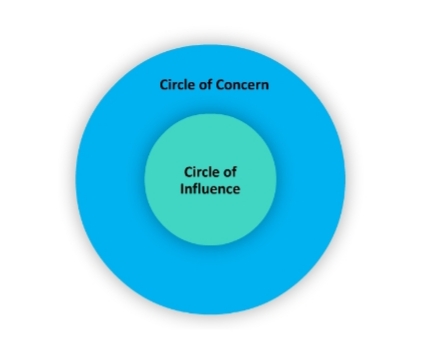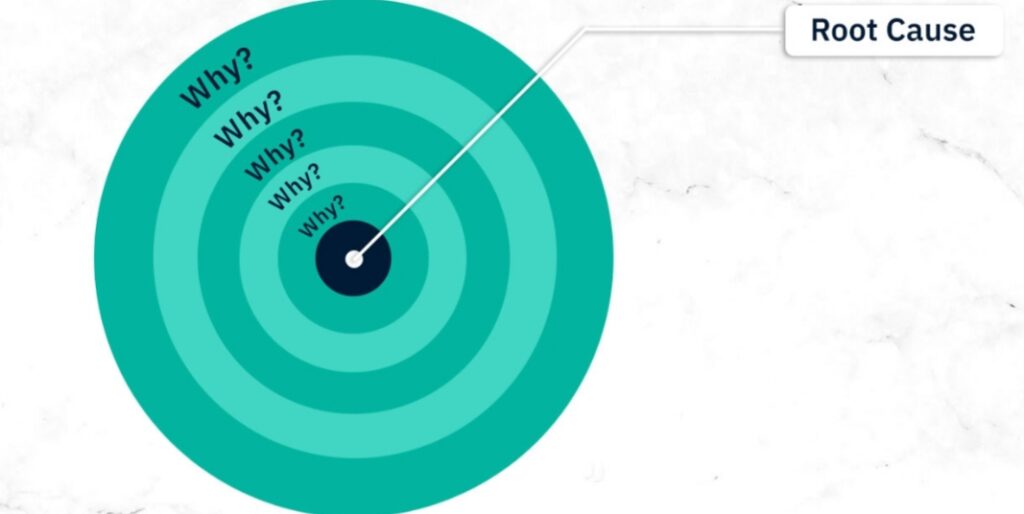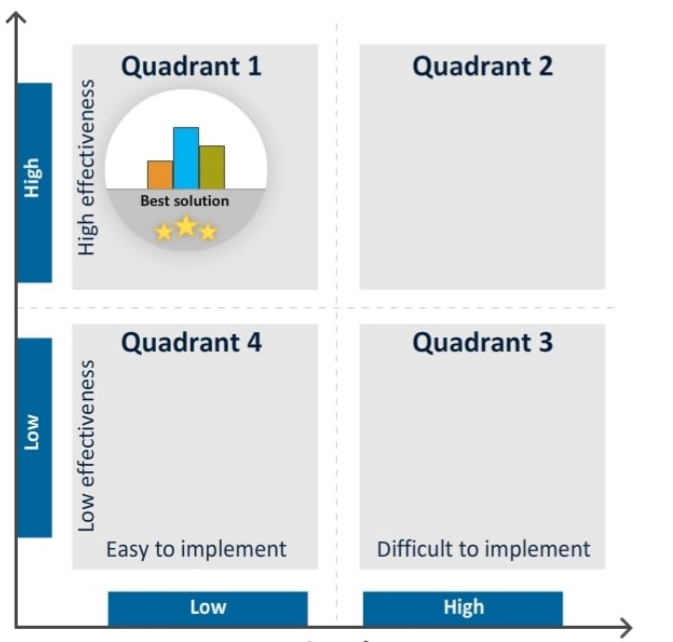When the road comes to an end, change direction and you will pass through. – The I Ching
At some point, in our lives, be it regarding our personal affairs, within our work unit or for our clients, we need to solve problems in order to make progress or avoid a negative outcome from an incident or simply to become better at what we do.
Are all problems, however, worth solving? Yes!… No!… If you answered no, how do you decide which ones to solve and which ones to let be?

The Circle of Concern – This entails all the problems around you which you have little or no control over.
The Circle of Influence – This covers problems around you which you can influence, control and resolve.
Modes of Thinking …with regard to problem solving
Critical Thinking
- Uses facts and logic to evaluate ideas to decide the best solution
- Converged around a single solution
Creative Thinking
- Involves brainstorming
- Generates many ideas
- Diverges into multiple solutions

The 5-step problem-solving process
- Identify – What is the problem?
- Analyse – What caused the problem?
- Explore – What are the possible solutions?
- Select – What is the best solution?
- Implement – What will success look like?
Solving Problems …The Agile Way
The Agile way simply refers to allowing for improvement even after a solution has been implemented.
Consider the key points below:
- Clearly understand the problem before trying to solve it
- Keep improving the solution
- Tackle problems head-on, rather than avoid it and encounter the negative effects
A problem well stated is a problem well solved. – Charles Kettering
Identify
- Write a problem statement
- Answer the Who, When, Where and What questions regarding the problem
- What happened?
- Who is involved?
- When did it happen?
- Where did it happen?
- Avoid the Why and How questions for now
- Why did it happen?
- How did it happen?
- Come up with a consice description of the problem
- Decide if the problem is worth solving – what will be the outcome, eitherways?
Every problem contains within itself, the seeds of its own solution. – Stanley Arnold
Analyse
- Learn all you can about the problem
- Gather the facts to acquire enough knowledge
- Interview stakeholders, teammates and partners
- Don’t assume you know based on the problem statement
- Ask Why repeatedly till you find the root cause – “5 Whys“
Explore
- Come up with several ideas to solve the problem
- Get ideas from different stakeholders
- Brainstorm, but do it well – involve people in different job roles with similar experiences
- Uncover as many approaches as possible. Decision point will be arrived at later
Select
Types of Solutions
- Corrective Solution – corrects or fixes the root cause of the problem
- Adaptive Solution – accommodates the problem
- Interim Solution – a make-up type of solution (temporary)
- Contingent Solution – a backup plan
- Preventive Solution – created before the problem occurs
Choosing the Best Solution – Factors
- Time – If the delivery timeline is short, reduce the number of people involved
- Quality – The best solutions may require inputs from experts
- Buy-In – The extent to which others need to buy in to the solution
Ease and Effectiveness Matrix (Quadrant)

Used to categorise your various solutions based on ease and effectiveness:
- Q1 – Highly Effective and easy to apply
- Q2 – Highly Effective but difficult to apply
- Q4 – Low Effectiveness but Easy to apply
- Q3 – Low Effectiveness and difficult to apply
Sequence to solve a problem
- Write a problem statement, clearly describing the problem
- Find out if the problem is worth solving
- Ask the “5 Whys” to arrive at the root cause of the problem
- Brainstorm to get different ideas to address the problem
- Identify different types of solution to the problem
- Identify who should choose the solution
- Use the Ease and Effectiveness Matrix to select the best
- Design a way to measure the effectiveness of the solution
- Build an implementation plan
Implement the Solution
- Decide the solution that will yield success
- Decide how you will measure the success –
- Was the problem solved?
- How effective was the solution on a percentage scale?
Perfect solutions to our problems can’t be found in an imperfect world. – Sir Winston Churchill
The world is full of complexities so even the best solutions may not work perfectly. Hence, the need for the Agile practice while implementing solutions. Better solutions are thought of and implemented to refine the existing ones.
Click here to view my achieved credential from IBM on Solving Problems with Critical and Creative Thinking.
image credits: IBM & Pixabay
